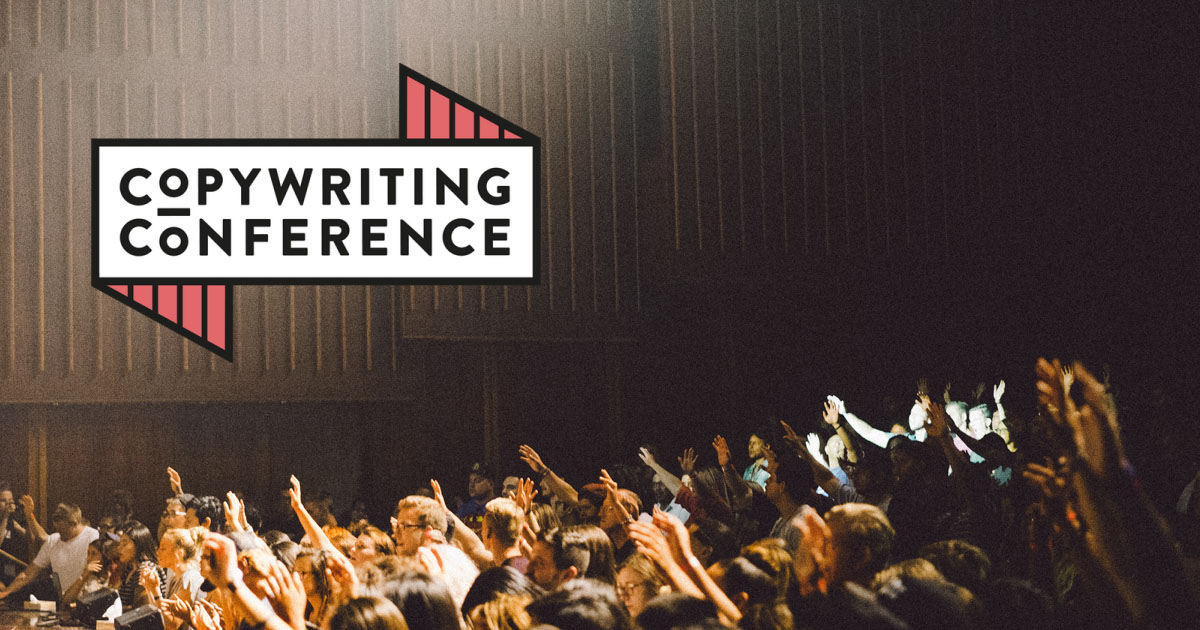When you think of a writer, you probably think of a brooding, lonesome type, hunched over a keyboard and hammering away. And you’d be half right; many writers do wind up tackling their jobs solo.
But when you bring a bunch of lone wolf writers together, amazing things can happen. This year’s Copywriting Conference is a perfect example: an event that featured a whole host of lively discussions, inspiring workshops and game-changing takeaways delivered by some of the best writers in the business.
Here’s a roundup of the most important lessons and copywriting tips from CopyCon 2018.
Fight the bullshit
Ryan “Dr Draper” Wallman – AKA the bloodhound of bullshit – kicked off (in all kinds of ways), with a talk about how to detect marketing BS in all its forms.
Every writer under the sun knows to write in clear language and short sentences, but Ryan laid out a strong plan for convincing your clients that simple is best:
- Show stakeholders evidence, including stats, research, and industry leaders that demonstrate why jargon and abstract language don’t work.
- Challenge the “our audience is smart” argument. Remind clients that very few people have ever complained about something being too readable.
- Explain ‘The Pratfall Effect’: people are more likely to trust a brand that owns up to its shortcomings.
- Call bullshit when you see it. The problem won’t just magically go away; as writers, we all need to say something.
Get to the heart of your brief
Decoding a brief and translating it into great copy is an art, one plenty of marketers have written about (including Kieran).
But there is always more to learn about understanding what your client needs, and Anna Gunning proved this with some brand new models to help writers probe briefing documents and calls.
In particular, Anna introduced us to the hierarchy of business. This model proved to be an interesting (and to me, quite new) take on the usual “what does our audience want to achieve?” question.
The idea is that every professional you might write for has three levels you need to consider: their basic goals (I want to get promoted), immediate goals (I want to cross this task off my to-do list), and the more noble goals (I want to help my business succeed).
By considering your audience’s different goals and what info they might need to achieve them, you can better identify any gaps in your knowledge before you start writing.
UX copy that converts
There are many different kinds of writer out there. Seven, in fact, if our blog on the topic is anything to go by.
But there’s a new cowboy in copy town: the UX copywriter. Francesca Catanuso and Jade Goldsmith from booking.com took us through how the ecommerce giant works with UX copywriters to turn user data into powerful, results-driven CTA copy.
Some of their research findings were quite surprising:
- Emojis can have a dramatic effect on email open rates.
- Consistency enhances CTA performance, so if you say “register” at one point in a form, make sure another button doesn’t say “sign up.”
- “Instant” is a word that helps reassure people.
- Human language gets results. So, “I’ll proceed” is better than “proceed.”
The key takeaway overall was just how useful user data can be. (So, if one of my lovely clients is reading this, please take this to heart and let me see some campaign results. I’d really appreciate it.)
The art of bias
Did you know that the average person touches their phone roughly 2,617 each day? That’s a lot of swipes and taps, and potentially a lot of time spent looking at a device that can access all kinds of information.
So, how do people deal with processing so much info each day? Simply, they have certain biases that influence what they focus on, retain, and ultimately decide to do with the information available to them.
In her heuristics masterclass, Anna Johnston ran us through her favourite (and some of the most useful) biases. Some seem particularly (in fact, possibly unfairly) helpful for copywriters:
- If you give someone multiple options, they’ll inevitably compare them. By giving a really bad option, it can make the others seem far more appealing.
- If you give people too many benefits for a solution, all of them seem less impactful.
- But framed another way, if you give someone lots of negatives about something, each one will seem far less important.
The mood board and the black book
Two sessions later in the day each offered a useful tone tool to keep in your arsenal.
- Celia Anderson from Siblinc (another specialist copywriting agency based in Cornwall? Must be something in the water), explained how a group of writers can rapidly shift tone to cover the myriad of fashion clients they work with. Siblinc’s secret? They create reference guides and mood boards of their own to help writers quickly get into the mindset of each brand.
- Direct response writer James Daniel discussed his tactics for creating an award-winning hearing aid direct mail campaign. James leaned on his ‘little black book’ and crafted copy to suit real people he knew that matched his target audiences. He even went as far as to get these people to review his copy to ensure his tone would hit home with each type of audience. That’s commitment.
Metaphors for the win
Frustratingly, we had to skedaddle before the end, to get the last train back to Cornwall, so we missed the mighty Doug Kessler. But my colleague David was there, and had this to say…
Doug’s main point was that metaphor is more than just an intellectual comparison; it invites us to feel about this the way you feel about that.
So when you’re deciding whether a figurative idea works, you need to consider the widest connotations of both things you’re comparing: not just the parts that are obviously alike, but everything they make you think, remember and feel. That makes them delicate, fiddly… and incredibly powerful.
Also, Doug gave us permission to mix our metaphors with abandon. Dangerous words there.
Every day’s a school day
Even for experienced writers, there’s always something to learn. And if you’re hungry for more copywriting advice, you’ll find 50 writing tips here.
(Or you could scroll down and sign up for our monthly newsletter…)



